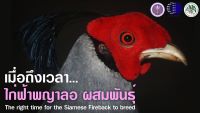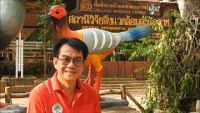Keywords :
Adaptation; Morphology; Murid; Performance; Rodentia
บทคัดย่อ :
Morphological traits are frequently used as proxies for functional outputs such as bite force performance. This allows researchers to infer and interpret the impacts of functional variation, notably in adaptive terms. Despite their mechanical bases, the predictive power of these proxies for performance is not always tested. In particular, their accuracy at the intraspecific level is rarely assessed, and they have sometimes been shown to be unreliable. Here, we compared the performance of several morphological proxies in estimating in vivo bite force, across five species of murine rodents, at the interspecific and intraspecific levels. Proxies used included the size and shape of the mandible, as well as individual and combined muscular mechanical advantage (temporalis, superficial masseter and deep masseter). Maximum voluntary bite force was measured in all individuals included. To test the accuracy of predictions allowed by the proxies, we combined linear regressions with a leave-one-out approach, estimating an individual s bite force based on the rest of the dataset. The correlations between estimated values and the in vivo measurements were tested. At the interspecific and intraspecific levels, size and shape were better estimators than mechanical advantage. Mechanical advantage showed some predictive power at the interspecific level, but generally not within species, except for the deep masseter in Rattus. In a few species, size and shape did not allow us to predict bite force. Extrapolations of performance based on mechanical advantage should therefore be used with care, and are mostly unjustified within species. In the latter case, size and shape are preferable.
เอกสารอ้างอิง :
Ginot, S., Herrel, A., Claude, J. and Hautier, L., (2019). Morphometric models for estimating bite force in Mus and Rattus: mandible shape and size perform better than lever-arm ratios. Journal of Experimental Biology, 222(12), p.jeb204867.



